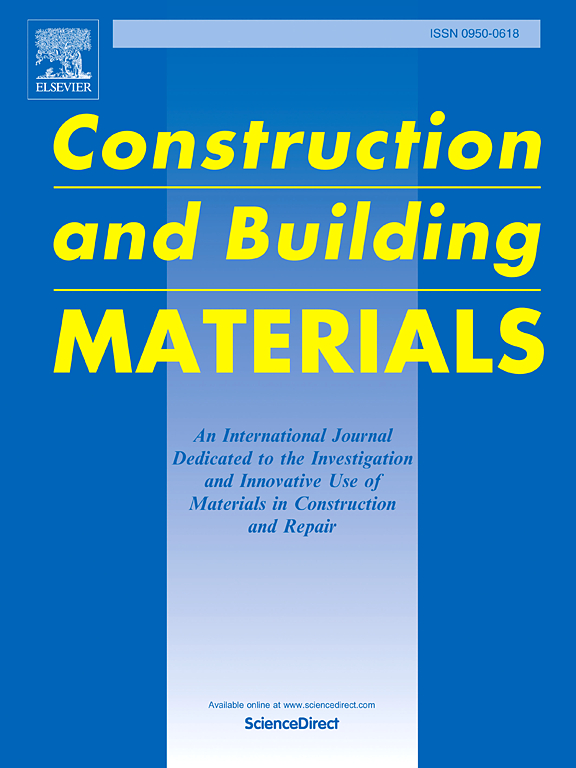Effects of aging on the rheological and microscopic properties of partially epoxidized soybean oil rejuvenated asphalt binders
IF 7.4
1区 工程技术
Q1 CONSTRUCTION & BUILDING TECHNOLOGY
引用次数: 0
Abstract
The sustainable utilization of reclaimed asphalt pavement (RAP) is crucial for conserving natural resources, preventing excessive waste, and improving cost efficiency in pavement engineering. However, subsequent aging of rejuvenated asphalt remains a critical challenge that could potentially diminish the long-term performance of the pavement. In this study, the aging behavior of partially epoxidized soybean oil (PESO) rejuvenated aged asphalt binders was investigated using PESO at different dosages and epoxy values. The secondary and severe aging of PESO rejuvenated asphalt was treated by pressure aging vessel (PAV) test. Fourier transform infrared Spectroscopy (FTIR) and atomic force microscopy (AFM) tests were used to analyze the changes in functional group composition and micro-morphology of the rejuvenated binders before and after aging. The rheological behavior of the secondary aged PESO rejuvenated asphalt was evaluated by dynamic shear rheometer (DSR) and bending beam rheometer (BBR) tests. After the severe aging process, the proportion of "non-bee structure" regions decreased by only 3.97 %, indicating PESO rejuvenated asphalt binder owned excellent resistance to severe aging. The three functional group indices and master curves clearly demonstrated a positive correlation between secondary aging resistance and elasticity with PESO's epoxy value, but a negative correlation with the dosage. Under identical aging conditions, the master curve of PESO rejuvenated asphalt exhibited significantly smaller variations compared to that of the base asphalt, indicating superior anti-aging performance of PESO rejuvenated binders. PAV-aged PESO rejuvenated asphalt binders with a high dosage and low epoxy value exhibited a higher λ value, resulting in enhanced low-temperature performance and cracking resistance. Overall, PESO rejuvenated asphalt binders outperformed base asphalt binders regarding the aging behaviors, which demonstrated the applicability of PESO as a sustainable rejuvenator for aged asphalt.
老化对部分环氧大豆油再生沥青粘结剂流变学和微观性能的影响
再生沥青路面的可持续利用对于节约自然资源、防止过度浪费、提高路面工程成本效益具有重要意义。然而,再生沥青的后续老化仍然是一个关键的挑战,可能会降低路面的长期性能。在本研究中,研究了部分环氧大豆油(PESO)在不同用量和环氧值下对老化沥青粘合剂的老化行为。采用压力老化容器(PAV)试验对PESO再生沥青进行了二次和重度老化处理。采用傅里叶变换红外光谱(FTIR)和原子力显微镜(AFM)测试分析了回青粘合剂老化前后官能团组成和微观形貌的变化。采用动态剪切流变仪(DSR)和弯曲梁流变仪(BBR)试验对二次老化PESO再生沥青的流变特性进行了评价。经过严重老化过程后,“非蜂结构”区域的比例仅下降了3.97 %,说明PESO再生沥青粘结剂具有优异的抗严重老化性能。三个官能团指标和主曲线均表明,PESO的二次抗老化性和弹性与环氧值呈正相关,而与投加量呈负相关。在相同老化条件下,PESO再生沥青的主曲线变化幅度明显小于基础沥青,说明PESO再生粘结剂具有较好的抗老化性能。高掺量、低环氧值的pav老化PESO再生沥青粘结剂表现出较高的λ值,从而增强了低温性能和抗裂性能。总体而言,PESO再生沥青粘结剂的老化性能优于基础沥青粘结剂,这表明PESO作为一种可持续的老化沥青再生剂的适用性。
本文章由计算机程序翻译,如有差异,请以英文原文为准。
求助全文
约1分钟内获得全文
求助全文
来源期刊

Construction and Building Materials
工程技术-材料科学:综合
CiteScore
13.80
自引率
21.60%
发文量
3632
审稿时长
82 days
期刊介绍:
Construction and Building Materials offers an international platform for sharing innovative and original research and development in the realm of construction and building materials, along with their practical applications in new projects and repair practices. The journal publishes a diverse array of pioneering research and application papers, detailing laboratory investigations and, to a limited extent, numerical analyses or reports on full-scale projects. Multi-part papers are discouraged.
Additionally, Construction and Building Materials features comprehensive case studies and insightful review articles that contribute to new insights in the field. Our focus is on papers related to construction materials, excluding those on structural engineering, geotechnics, and unbound highway layers. Covered materials and technologies encompass cement, concrete reinforcement, bricks and mortars, additives, corrosion technology, ceramics, timber, steel, polymers, glass fibers, recycled materials, bamboo, rammed earth, non-conventional building materials, bituminous materials, and applications in railway materials.
 求助内容:
求助内容: 应助结果提醒方式:
应助结果提醒方式:


